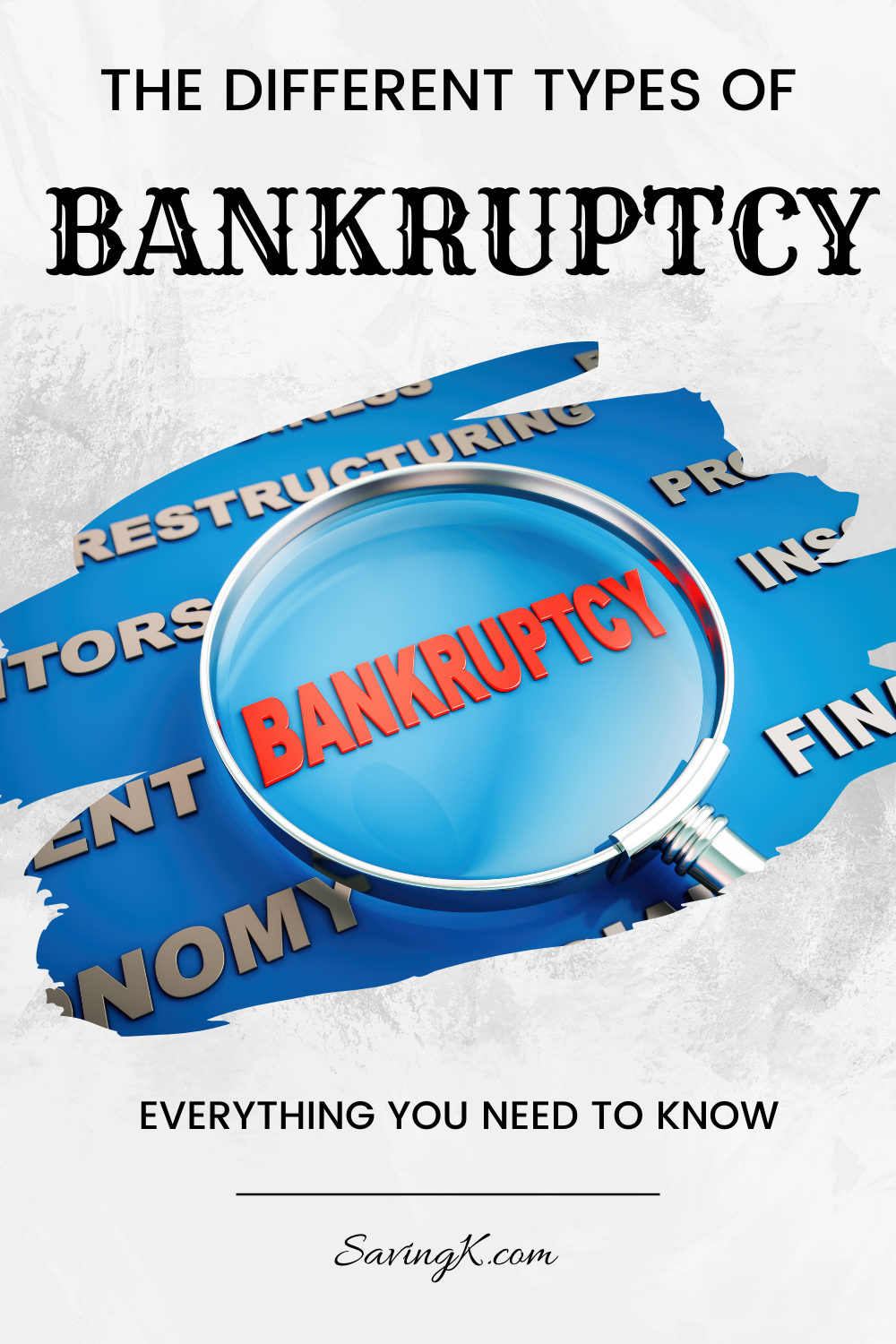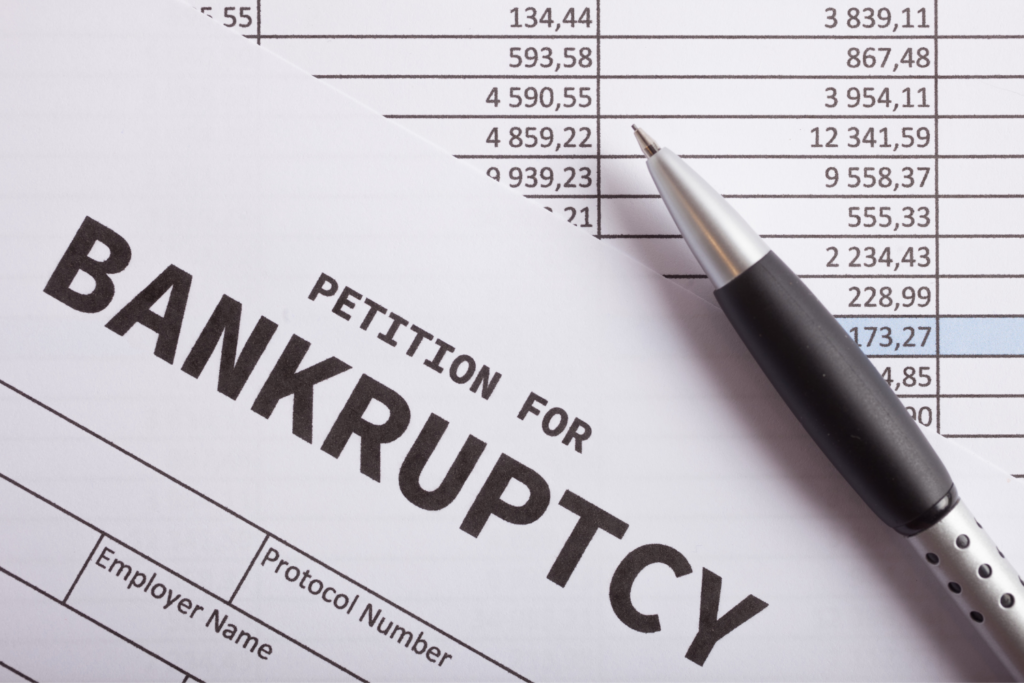
When people think of bankruptcy, they often think of a person who is deep in debt and has no other choice but to declare bankruptcy. While this may be the most common type of bankruptcy, there are actually several different types that a person can file.
Contents
Different Types of Bankruptcy
In this blog post, we will discuss the different types of bankruptcy and what you need to know about them.
Chapter 7: Liquidation
The most common type of bankruptcy is Chapter Seven bankruptcy, also known as liquidation bankruptcy. This type allows the person to discharge most, if not all, of their debts. In order to qualify for Chapter 7, the person must pass a means test which determines whether or not they have the ability to repay their debts. Click here for the ultimate guide on Chapter 7 bankruptcy.
Chapter 13: Repayment Plan
Another type of bankruptcy is Chapter Thirteen, also known as reorganization bankruptcy. This type of bankruptcy is available to people who do not qualify for Chapter Seven. With this type, the person is able to reorganize their debt and create a repayment plan that fits their budget.
Chapter 12: Family Farmers
Under the Bankruptcy Code, farmers and fishermen are eligible to file bankruptcy under Chapter 12 if they:
- earn a regular income from farming operations; and
- have sufficient gross annual income that qualify under the statutory requirements.
Farmers can also be eligible for Chapter 12 when they meet income and debt limitations set by the court depending on the size of their farming operation.
Chapter 11: Large Reorganization
The most common type of business bankruptcy in the United States is Chapter 11, which allows businesses to continue operating while protected from creditors’ lawsuits. In a Chapter 11 reorganization, shareholders, creditors and other stakeholders negotiate a plan for divesting assets and repaying debt. If that plan is approved by the bankruptcy court, an operating business can continue under the auspices of a debtor-in-possession (DIP) trustee who has the power to decide whether to dismiss employees or keep them on board. The DIP trustee also has the authority to sell assets, enter into new contracts and incur new debt on behalf of the business.
Chapter 11 reorganizations are often successful in allowing businesses to restructure their finances and emerge from bankruptcy as healthier entities. However, they can be complex and time-consuming, requiring businesses to halt operations while they negotiate and renegotiate with creditors. Since the exact effects of Chapter 11 are unique to each case, business leaders should consult with financial experts before initiating a Chapter 11 filing.
Chapter 9: Municipalities
Municipalities across the United States have been struggling in recent years to make ends meet. In many cases, they have resorted to raising taxes and fees, cutting services, and using creative financing techniques to stay afloat. However, some municipalities have not been able to overcome their financial difficulties and have filed for bankruptcy.
The most notable municipal bankruptcy in recent years was that of Detroit, Michigan. Detroit filed for bankruptcy in 2013 after years of financial mismanagement and decline. The city was able to restructure its debt and emerge from bankruptcy in 2014, but it is still struggling to provide basic services to its residents.
Other municipalities that have filed for bankruptcy include:
- Jefferson County, Alabama (2011)
- Stockton, California (2012)
- Central Falls, Rhode Island (2012)
- Bay Area Toll Authority in San Francisco, California (2013)
- San Bernardino, California, and Mammoth Lakes, California (both in 2012)
There are several disadvantages of municipalities filing for bankruptcy.
- It can tarnish a city’s reputation and make it more difficult for residents to trust public officials.
- It can also lead creditors to refuse to provide funds in the future, which can impact the ability of cities to maintain basic services.
- In some cases, filing for Chapter 9 is seen as a sign of financial weakness and can make it difficult for municipalities to attract new businesses and residents.
Despite the disadvantages, filing for bankruptcy may be the best option for some struggling municipalities. It can provide them with a chance to restructure their debt and get back on solid financial footing. It also allows them to continue providing basic services to their residents while they work to improve their financial situation.
Municipal bankruptcies are complex legal proceedings that can take years to resolve. If you are a municipal official or resident who is facing financial difficulties, it is important to seek the advice of an experienced bankruptcy attorney to discuss options and determine whether filing is the right resolution.
Chapter 15: Used in Foreign Cases
Chapter 15 is a chapter of the United States Bankruptcy Code that deals with the recognition of foreign bankruptcies and creditors. It was added to the Bankruptcy Code in 2005 in order to implement the provisions of the Uniform Law on Cross-Border Insolvency.
The purpose of Chapter 15 is to promote cooperation between United States courts and foreign courts so that creditors can be paid consistently across the various jurisdictions. The goal of Chapter 15 is to provide a mechanism for the orderly administration of cross-border insolvency cases with an emphasis on bringing assets back into the United States.
Under Chapter 15, a foreign representative may file for recognition of a foreign proceeding in the United States. This gives the foreign representative control over the debtor’s assets in the United States and allows for a coordinated approach to dealing with the debtor’s creditors.
Creditors are also given certain protections under Chapter 15. For example, they are allowed to file claims in the United States bankruptcy court, and they are given priority in the distribution of the debtor’s assets.
Chapter 15 is modeled after Chapter 11 of the Bankruptcy Code, and shares many similarities with it. However, there are some important differences. For example, unlike in Chapter 11, a foreign representative is not required to have its assets under the jurisdiction of the United States court before filing a petition. Furthermore, while Chapter 11 provides for an “automatic stay” against most creditors, creditors are not automatically stayed under Chapter 15. Rather, they must be brought into the case in order to receive benefits from it.
Overall, Chapter 15 is designed to make filings across jurisdictions more streamlined and consistent. It allows for creditors to be treated fairly no matter where they reside, and it provides a framework that is able to cope with cross-border insolvency.
The bankruptcy laws of the United States are significantly more generous than those of other countries. This is due in part to the fact that Chapter 15 deals with the recognition of foreign bankruptcies and creditors. The goal of Chapter 15 is to provide a mechanism for the orderly administration of cross-border insolvency cases while also bringing assets back into the United States.
Bankruptcy Conclusion
If you are considering filing for bankruptcy, it is important that you consult with an experienced bankruptcy attorney to determine which type is right for you or if you are even a candidate as debt consolidation may be a better option. Each type has its own advantages and disadvantages, so it is important that you understand all of your options before making a decision. An experienced bankruptcy attorney can help you navigate the process and make sure that you are taking advantage of all the benefits that bankruptcy has to offer.





